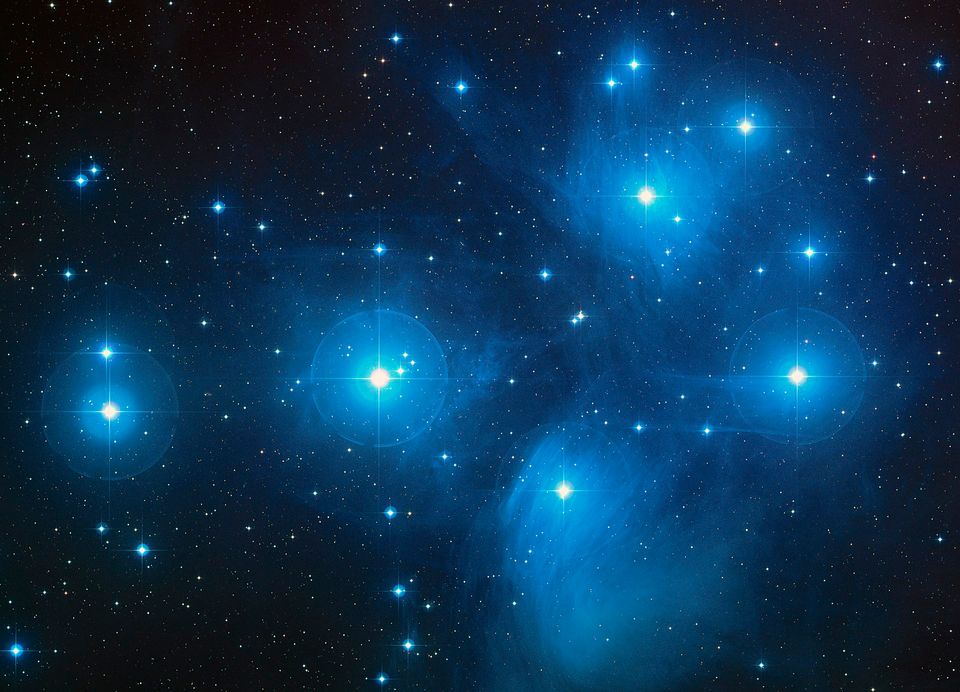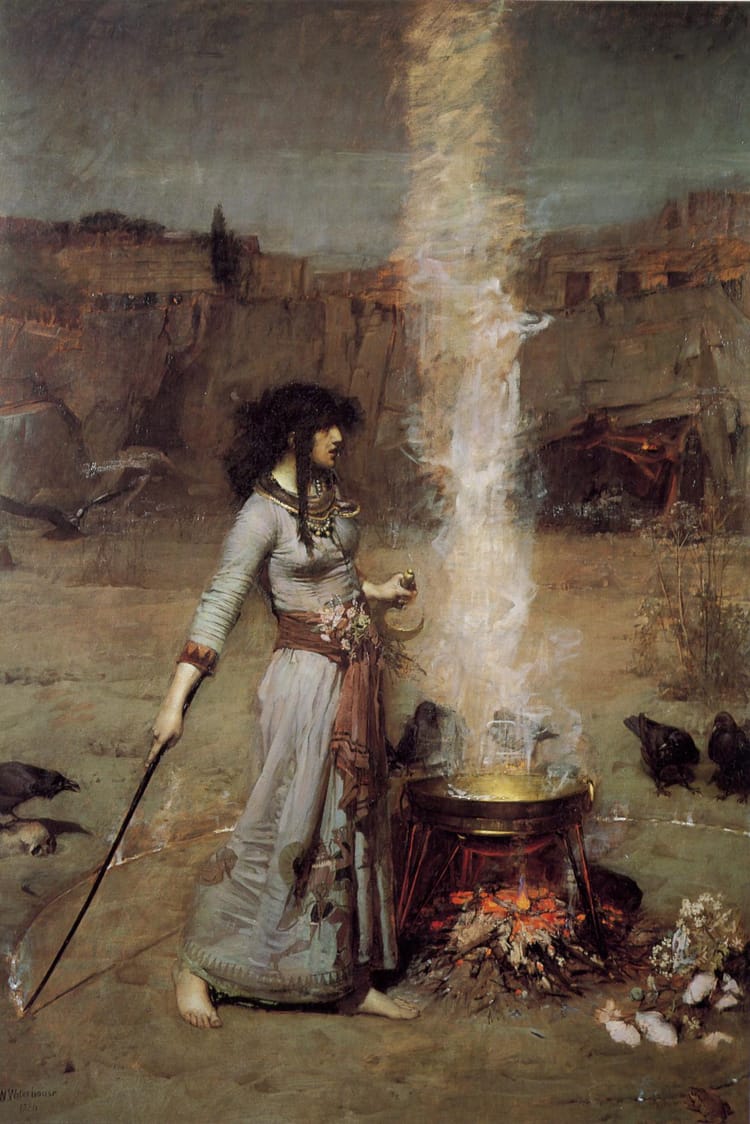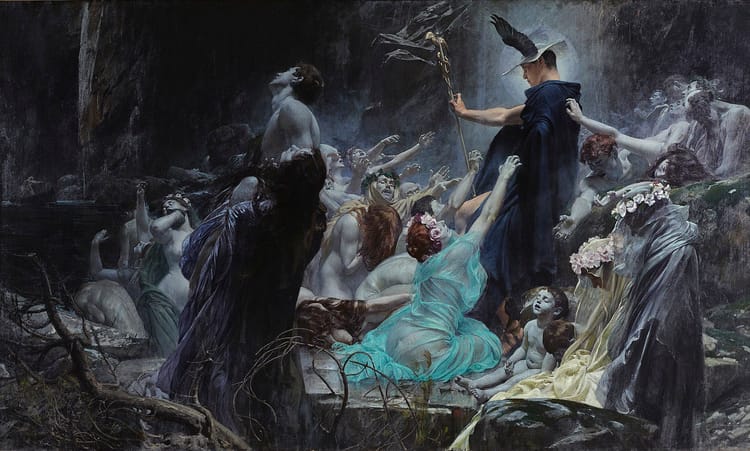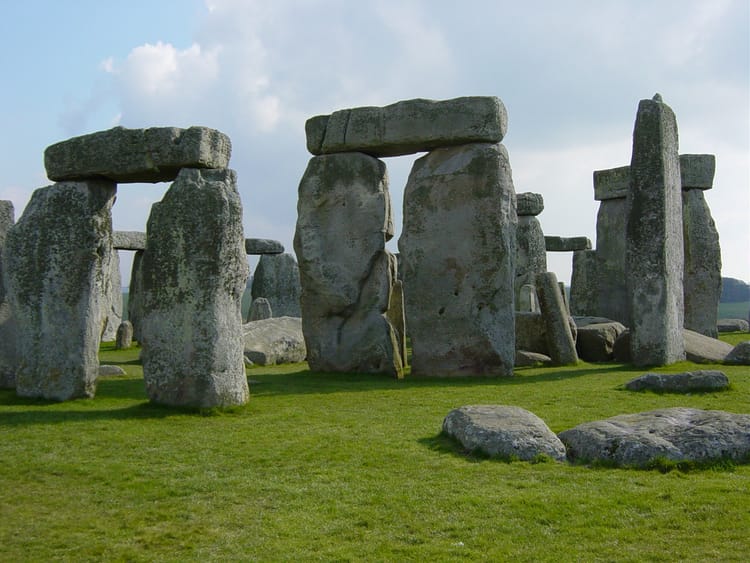Full Moon: Stars beyond the zodiac

Hello. It's Friday (in my timezone), and I want to build on the last Full Moon's astrology post right away, as I'm caught up in a new practice I began on the equinox; it has instantly begun to connect me better with stars and constellations that so-called Western astrology typically ignores. I'm indeed so caught up that I want to dive into description with very little preamble — except for a review of my motivations. I hope that if you often find yourself paying close attention to the night sky, using a telescope or wishing you had one, we may have something to talk about in the comments or in whatever other spaces we share together.
The quest, revisited
I've mentioned my neologistic astrolomy on several occasions. It's a quest to personally reunite occult, magical study of celestial bodies along the ecliptic — the plane traversed by the Sun and the other planets in our solar system — with comprehensive and empirical study of the entire night sky. In most cultures throughout human existence, all the constellations and planets have always been mythically imbued, calendrical markers, keepers of seasonal wisdom, guardians and lessons, pragmatic tools and sacred entities bound together. The post-"Enlightenment" settler-colonial paradigm I was raised under is the only significant outlier to that tendency; and I find it utterly unhelpful for recovering ancestral land connection, for with land connection there must also come sky connection.
So in shorthand, I seek astrolomy, astrology and astronomy fused back into one word, but all I mean to say is mending a tear in how people with my upbringing look at the stars. Returning to the most instinctive, ordinary way for humans to look at them. Another word I've now found, which looks and sounds magnificent, is the Old English tungolcræft, literally star-craft, and referring to any kind of celestial study. Star-craft might be a good modern rendering as well.[1] I will try to decide soon on a preferred term for newsletter purposes.
But as for how to fashion my own tungolcræft, I've been thinking for a little while that it won't be enough for me to simply immerse myself in astrology and astronomy as their own disciplines. That isn't the same as combining them. Nor does the astrological tradition I'm versed in have everything I need. "Western" mainstream astrology has been valuable to me in the ways I wrote about a month ago; but as I noted then the kinds of storytelling it offers are still limited to internal human analysis. What I've also thought about a great deal in the past few weeks is that this kind of astrology typically fuels relation-building between the practitioner and only about a dozen constellations, without even spending much time on the individual stars within each one. Without giving up that astrology for its own purposes, I would also like to consciously engage with the folklore of constellations across my whole celestial hemisphere, focused most of all on Celtic and Germanic animist angles, as well as the lore of the traditional indigenous custodians of the land I'm on.[2]
It so happens that I've stumbled into a means of exploring these things through a new journal. This past Saturday, at the beginning of my new ritual year, I began logging observations of the world. Not the way I do here, but instead it's a daily record of things I notice in the land, water, and sky, concentrated especially on the exact plot where I live, but also making some wider considerations for this town and those neighboring it. I'm trying to notice and track the appearances and disappearances of plants, animals, fungi, as well as their behaviors and phases. The same for rainfall, river and stream flows, temperature ranges, and wind direction. I want to see how my local ecosystem's rhythms work not only species by species but also relation by relation: what's blooming when these birds fly up for spring? what's ripe to harvest when the cicadas start whining? There are thousands of things to learn.
And I won't learn all of these things just in the course of the year. This is knowledge that takes a lifetime and I'm running half a life behind. I've been inspired by indigenous and non-indigenous voices to adopt this practice and internalize it and pass it down because it's one of the most intrinsic parts of land-connectedness; if I wish to recover that, I have to start with learning more than the basic seasons and idealized ecological archetypes, instead building knowledge of exactly what's going on around me, exactly what patterns exist right here. I began to do this unconsciously when I started gardening and proto-foraging, but now I will do it with intention. One component of this logging is thus also to log the stars. What can I expect to happen when certain stars return to the night sky for the year, and when other stars vanish, or make their midnight culmination, or other behaviors?
That is critical information, a long-entrenched example of how land connection requires sky connection. Hunter-gatherers and farmers alike have relied on astronomical monitoring for thousands of years. The constellations — 88 in modern scientific delineations, but much more variable across cultures — are bound up in legends and magic, yet they also bear concrete guidance about what's going to happen in the land below, not through influence but through correlation. Through this I can start my star-craft.
Tracking 88 constellations, never mind all the stars within them, would be too much for me at the very outset, so for this first year I've decided to focus just on three non-zodiacal constellations with stories that resonate for me (though for what it's worth, the zodiac as the Cymric mythological entity of Caer Sidi is extremely important too). I'm then also tracking nine individual stars outside of those constellations, and a bonus "tenth" that's complicated. After this year, I look forward to adding more.
Here, though, are my current focuses.
Ursa Major
To me this is both the Bear of Greek myth, and the Plough of Cymric lore. In its form as the Bear I wish to show it some devotion as a matter of pan-boreal bear magic and welcoming bears into my animal guide language. As the Plough, meanwhile, the constellation makes more sense to me in terms of which parts are typically visible despite light pollution; and there is a secondary devotional connection to the figure who pushes the Plough ahead, the constellation Boötes. In Cymric this is Hu Gadarn, a legendary figure whose past significance was significantly embellished by dear forger Iolo Morganwg, but who was always associated with ploughing in some way. I think the neopagan reading of Hu Gadarn as a stand-in for Cernunnos/Karnonos or Arawn, the (my) antlered nature god, is a fair one; to some people these days it would make no sense for a god of "the wild" to be linked with agriculture, but in the oldest human ways, hunting and gathering and farming are mutually compatible. I am not yet ritually ready to track all of Hu Gadarn, but the Plough before him is an important beginning.
Orion
To me this is the Hunter, but not necessarily of Greek legend, though I do enjoy the seasonal tug of war between Orion and his bane Scorpio; interestingly the constellations could also be seen as anchors of the Milky Way, with Scorpio near the galactic center itself and Orion on the galactic edge. Here is the other of Arawn's guises, huntmaster and shepherd of the forest, appearing longest in winter as hunting becomes more necessary for survival. (In his form as Ploughman, of course, he's most visible in spring and summer.) I've been able to identify Orion for about as long as I've known Ursa Major — and Minor — and so this gives me all the more reason to start with him. He is bold and relentless. I give praise especially to his brightest stars Betelgeuse (Yad al-Jawzā) and Rigel (Rijl al-jabbār).[3]
Corona Borealis
The name here means "Northern Crown" and relates to the Greek myth of Ariadne, but to me this is increasingly Caer Arianrhod. The aria- matching is a coincidence; Ariadne may be an ancient Cretan-derived name meaning "most holy" whereas Arianrhod is Cymric for "silver wheel." Arianrhod herself belongs to Cymric folklore such as the fourth branch of the Mabinogi, and though she's a somewhat antagonistic figure there, she's still counted among the Children of Dôn, who are vestiges from one of at least two ancestor-god dynasties of Cymru's pre-Christian animist past. Dôn and her children seem strongly mapped to the sky[4], for mother Dôn herself lives in Cassiopeia, known as Llys Dôn ("the court of Dôn"). In a somewhat patriarchal maneuver, the whole of the Milky Way is given to her son, the magician Gwydion, as Caer Wydion ("Gwydion's fortress"); meanwhile, Dôn's daughter Arianrhod merely gets the Northern Crown for her own fortress. But in tribute to this overlooked figure, and because in my location Corona Borealis is not visible all year (whereas Cassiopeia is) so I will have a more interesting tracking experience looking at that constellation. Hail Arianrhod!
Stars of fascination
As I said above, I have too many things to track this first year for me to effectively monitor and connect with more than a few constellations; but also I want to connect with some individual stars, of which I can choose from about 5,000 without a telescope. I'm trying a compromise by creating a list of less than a dozen stars for me to individually work with from now until the next autumn equinox. The nine-and-change stars I've chosen call to me independently from the constellations they belong to because they are so bright that I can often see them regardless of local light pollution (similar to the visibility of Ursa Major and Orion); in addition to this brightness I importantly feel deep story in their cultural and observational history, and sometimes in their very names.
I list them here from more or less brightest to dimmest.
Sirius (Alpha Canis Majoris, Al-'Abûr): The Dog Star, brightest of all, its heliacal rising (that is, its annual reappearance) a mighty harbinger across many cultures whether for good or for ill. I'm already aware of how that night coincides with the anniversaries of many disruptive and depressive things in my life at this latitude. Perhaps by forming a more intentional relation with Sirius this will bring new perspective to how I commemorate those events and watch out for more of them.
Arcturus (Alpha Boötis, As-Simāk ar-Rāmiħ): If I'm not yet ready to connect with the whole of Hu Gadarn as Boötes, his brightest star Arcturus feels like a start. It's my hemisphere's second brightest, and the Greek name brings more of that bear magic I'm seeking.
Vega (Alpha Lyrae, Wāqi'): The once and future pole star for the north. I was introduced to it by Carl Sagan's Contact — technically first by the film adaptation — but I've found more to love about it than that. It belongs to the asterism[5] known as the Summer Triangle, so I associate it with short, precious nights filled with fireflies; and after my owner bought me a telescope a few years ago Vega was one of the first stars I learned to recognize through dedicated stargazing.
Procyon (Alpha Canis Minoris, Ash-Shira): As Sirius belongs to the sky's big dog, Procyon shines from the little dog. As both dogs belong to the Hunter, I will give each of their brightest stars my attention.
Altair (Alpha Aquilae, Al-Nisr Al-Ṭa'ir): Another corner of the Summer Triangle I have been doing a lot of healing work with eagle energy lately, and while I'm not yet sure how to relate to the entire constellation Aquila, its brightest star always gets my attention. I also love the Arabic pronunciation. Its name almost drips with power.
Aldebaran (Alpha Tauri, Al-Dabarān): Here finally is a zodiacal star, belonging to Taurus, but I'm not following it through any particular link with the Bull; Taurus is nowhere in my natal chart. I'll freely admit that I'm following this one for its name alone, called by it, whether it's through the beauty of the sound alone or through my inner child loving the similarity to fictitious Alderaan. I look forward to wherever this raw intuition will take me.
Antares (Alpha Scorpii, Arabic name unclear to me and seemingly for other people): Another zodiacal star, and in this case I would very nearly track all of Scorpio because of its war with Orion mentioned before, but I already know more or less what Scorpio is doing with itself throughout the year. Antares is special, however, as it's another star like Vega that fascinated me after I first got a telescope; its visibly red twinkle is almost startling. I think of it like a ruby in the firmament.
Deneb (Alpha Cygni, Al-Dhanab al-Dajājah): The last point of the Summer Triangle, so I feel obliged to follow it for completion. It's also a bit interesting because unlike Vega and Altair, Deneb is very nearly circumpolar (visible every night of the year) at my latitude; I live only a few degrees south of where that would apply. I'm very curious to discover for myself exactly which dates this star hides from me, and maybe I'll gradually develop some swan connection to the rest of Cygnus by the end of the year, or see if the constellation calls to me as a different kind of bird instead.
Regulus (Alpha Leonis, Al-Qalb al-Asad): One last zodiacal inclusion because I had to follow something from my Sun sign Leo. In the Behenian fixed stars it's also associated with the arch-magical herb mugwort, which feels like as a budding herbalist I absolutely must follow Regulus down that path.
The Pleiades: These are not one star, but a cluster of 7 to 18 visible stars (as well as many hundreds of others that require a telescope). I think that not everyone knows of the Pleiades unless they are interested in global folklore, scientific astronomy, or both, but once you dip your foot in any of those waters, the Pleiades make themselves known as a beautiful cross-cultural touchstone, significant to possibly every animist population since before recorded history. As they also belong to Taurus, I've noticed them rising earlier and earlier lately, and I've developed a mild fixation on learning stories about them.
So these are the stars I will be tracking.
Beyond databases
I would like to learn more names for them, ones of greater ancestral or local significance, and where that information is lacking or broken I would like to intuit names from my own throat. With these names will need to come stories, and where stories are missing, then they will need to be grown and tended.
I could simply learn everything I want to know about these stars' annual behaviors by looking up what modern scientists and ancient astronomers have already compiled for millennia, and what databases and algorithms can tell me about my own area's celestial patterns; but that would not be enough. I will not find the stories unless I chart the stars myself, unless I become the wandering Fool among them, unless I let myself infer nothing but what I can piece together directly.
The one concession I must make to third parties is that because I won't have the time, energy, or unclouded visibility to stay outside at all hours of every night and log everything that way, I will generally have to look up night sky simulators to find what stars are doing when I would need to be asleep or otherwise confined indoors. But my aim is to still only do this one night at a time, in tandem with my daily logging of the earth, the waterways, and the air; and I would also like to commit to intentionally going outdoors at night when possible and testing how quickly I can find the stars I'm tracking — and see how it feels to meet them as friends and family rather than mere acquaintances.
I am so excited to learn what stories will rise from this, and what stories I may eventually feel privileged to tell. Let the tungolcræft begin.
[1] Hyphenated still, I suppose, to differentiate from a certain video game.
[2] I've recently done closer research, and in so doing I've learned that despite being relatively certain before, I was probably wrong about which tribe. I am going to delve just a little further, but if it turns out my new findings are right, I will coincidentally feel safer naming the tribe openly here, since their territory spans a region where it would be harder for strangers to figure out exactly where I live, or what identifying biographical info my location correlates with.
[3] I think that although I'm working to learn Cymric and Germanic names for stars (for instance, in Nordic lore Rigel may be the Toe of Aurvandil, though there are other candidates), it's important to give Arabic names of stars even without following Islamic astronomy proper; it is only through the Islamic Golden Age that modern astronomy could even exist.
[4] Contrasted perhaps with the Children of Llŷr, who are associated much more with the sea through Llŷr himself as a very probable sea god related to the Lir of Irish fame.
[5] An asterism is a shape formed by stars which is not recognized as a formal constellation because the stars themselves typically belong to other constellations already (or are only part of a larger constellation). Many asterisms may be more visible than constellations in places of high light pollution.
Thank you for reading. This was a difficult day for me, medically and emotionally and (spi)ritually, but I have survived and it was good to focus on something else through this. Next week I have more grief to purge for the seasons, but while the week after will be an extra Last Quarter post due to lunar timing, I'm going to go in a less depressing, more exploratory direction as I meditate on the rise of death salons and the death positivity movement.





Member discussion